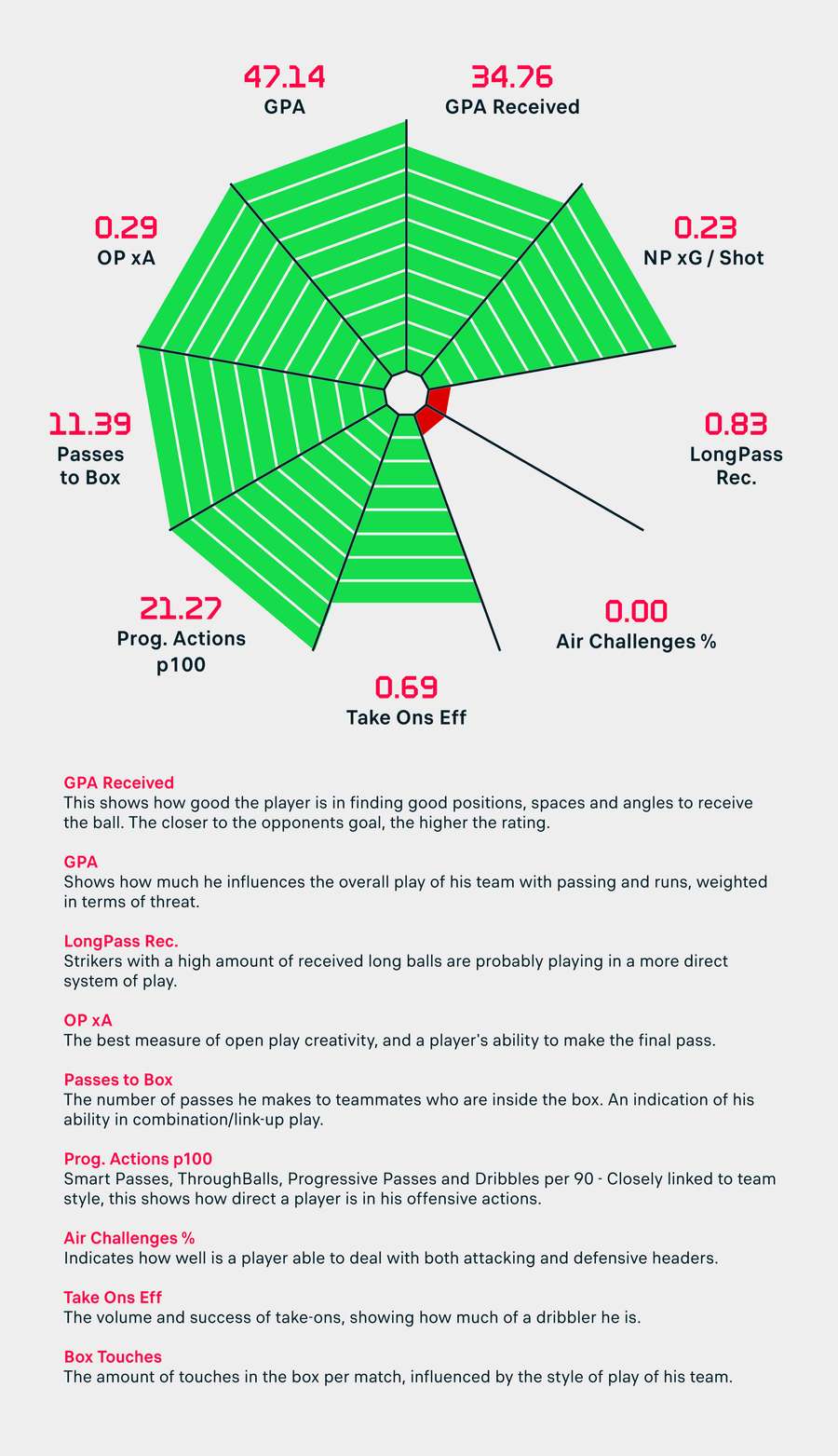We have analysed Croatia's much-vaunted midfield and Modric's skills several times during the tournament, and Messi's name has made its way into our articles here and there.
The purpose was always the same - to show how far behind Messi the best players in the world are in a particular skill. And it often seemed, with a little exaggeration, that having Messi on your side is like having two players on the pitch in one.
One of the most advanced data models from the experts at 11Hacks is called goal probability added (GPA+), or value per goal. This tracks all of a player's touches on the ball and then evaluates his offensive contribution to the team. In other words, how much his passing and dribbling increase the team's chances of scoring a goal.
In the current Ligue 1 season, a GPA+ index of 16 is enough to be ranked in the top 5% of players. Messi, however, is at 48, exactly triple that. Far beyond Kylian Mbappe (28) and well above Neymar (36). In the Premier League, Kevin De Bruyne is at 40, Mohamed Salah at 23 and James Maddison is one point below that.
There is no other player in the top five leagues whose movement and passing take the ball into such dangerous spaces so often. Incidentally, Messi has maintained almost the same GPA+ in Qatar for Argentina.

In the Spanish LaLiga, an elite winger averages three shots on goal and two crosses per game. However, Messi's average, while he was at Barcelona from the 2015/16 season onwards, was more than five shots and seven crosses per game.
If we take a player who is better than 95% of other footballers in terms of getting into shooting positions and put them next to Messi in the period under review (his time at Barcelona from 15/16), they would still have half the chance of scoring a goal in a match than Messi.
Combine the ability to get into the right spaces with a refined shooting technique and the result is numbers that are simply breathtaking.
From the 2015/16 season onward, Messi took 1,030 shots leading to 142 expected goals in LaLiga. In reality, however, he scored 188 times, which is 46 more than the expected mathematical value attributed to him.
This means that if an average player in his position had gotten the same chances, they would have scored 46 fewer goals.
Of those 188 goals, 50 (almost 27%) came from outside the box, another unprecedented record which defies the general footballing trend of moving the average distance of shots closer to the opponent's goal. But does that mean players should attempt to shoot from distance more often?
Messi needed 521 shots for his 50th goal, so he converted roughly one in 10 shots from distance. If the best finisher in the world only scored one out of 10 attempts from outside the box, how do you think other players fare from distance? You can see why the shooting trends are largely moving towards the goal.
As expert analyst Michael Cox aptly described in a podcast on The Athletic website, you can do three things with the ball on your foot - dribble with it, pass it to a teammate, or attempt a shot.
And Messi not only performs all three skills to a great level, but he is also the world's best at all three activities across an extended period of time. In this respect, the Argentine player is unique, and the data backs up this notion.
On top of that, it also shows how consistent his performances have been throughout his career. Messi may have set the bar pretty high a long time ago, but season after season he always safely reaches that benchmark again. This lack of fluctuation only adds to his uniqueness.
Football is a team sport and even the best individual has no control over everything that happens on the pitch. But you can be sure that with the ball at his feet, no other player in the world makes better decisions than Messi or gives their team a better chance of scoring.




